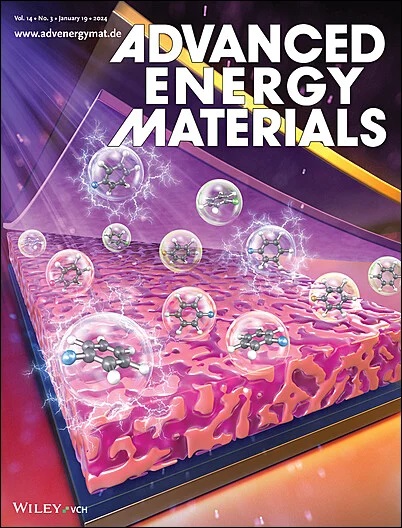Impact of Cathode Microstructure on Sulfur Redox Kinetics in Lithium–Sulfur Batteries
IF 24.4
1区 材料科学
Q1 CHEMISTRY, PHYSICAL
引用次数: 0
Abstract
Lithium–sulfur (Li–S) batteries offer high theoretical energy density and employ earth-abundant sulfur, making them a promising next-generation energy storage technology. Although essential for practical energy densities, high sulfur loadings, and lean-electrolyte contents lead to poor sulfur kinetics/utilization and cycle life. This study highlights the critical role of electrode microstructure in resolving these challenges. The particle morphology and size of a ketjenblack/sulfur composite are controlled through a scalable spray-drying procedure (SD-KB/S), producing an optimized cathode structure with uniform sulfur distribution and enhanced mechanical integrity with minimal electrode cracking. At a sulfur loading of 4 mg cm−2 and an electrolyte-to-sulfur (E/S) ratio of 6, SD-KB/S cathodes exhibit stable cycling performance, retaining a capacity of 768 mA h g−1 after 100 cycles, contrasting severe capacity fade with conventional electrodes. A cell overpotential deconvolution unveils that the activation overpotential (typically the largest barrier in conventional cells) is notably reduced in SD-KB/S cells. Although the concentration overpotential is also reduced with SD-KB/S, it becomes a prominent contributor to cell polarization, revealing the need to consider diffusional limitations in practical Li–S batteries. This work emphasizes the importance of advancing electrode and catalyst design concurrently—rather than sole catalyst development—to achieve high-performance and commercially viable Li–S batteries.

锂硫电池阴极微观结构对硫氧化还原动力学的影响
锂硫(Li-S)电池提供了很高的理论能量密度,并利用了地球上丰富的硫,使其成为有前途的下一代储能技术。虽然对实际能量密度至关重要,但高硫负荷和稀电解质含量导致硫动力学/利用和循环寿命差。这项研究强调了电极微观结构在解决这些挑战中的关键作用。通过可扩展的喷雾干燥程序(SD-KB/S)控制ketjenblack/硫复合材料的颗粒形态和尺寸,从而产生具有均匀硫分布的优化阴极结构,并以最小的电极开裂增强了机械完整性。在硫负荷为4 mg cm−2和E/S比为6的条件下,SD-KB/S阴极表现出稳定的循环性能,在100次循环后仍保持768 mA h g−1的容量,与传统电极的严重容量衰减形成鲜明对比。细胞过电位反褶积显示,SD-KB/S细胞的活化过电位(通常是常规细胞中的最大屏障)显著降低。虽然SD-KB/S也降低了浓度过电位,但它成为电池极化的一个重要因素,这表明在实际的Li-S电池中需要考虑扩散限制。这项工作强调了同时推进电极和催化剂设计的重要性,而不是单一的催化剂开发,以实现高性能和商业上可行的锂- s电池。
本文章由计算机程序翻译,如有差异,请以英文原文为准。
求助全文
约1分钟内获得全文
求助全文
来源期刊

Advanced Energy Materials
CHEMISTRY, PHYSICAL-ENERGY & FUELS
CiteScore
41.90
自引率
4.00%
发文量
889
审稿时长
1.4 months
期刊介绍:
Established in 2011, Advanced Energy Materials is an international, interdisciplinary, English-language journal that focuses on materials used in energy harvesting, conversion, and storage. It is regarded as a top-quality journal alongside Advanced Materials, Advanced Functional Materials, and Small.
With a 2022 Impact Factor of 27.8, Advanced Energy Materials is considered a prime source for the best energy-related research. The journal covers a wide range of topics in energy-related research, including organic and inorganic photovoltaics, batteries and supercapacitors, fuel cells, hydrogen generation and storage, thermoelectrics, water splitting and photocatalysis, solar fuels and thermosolar power, magnetocalorics, and piezoelectronics.
The readership of Advanced Energy Materials includes materials scientists, chemists, physicists, and engineers in both academia and industry. The journal is indexed in various databases and collections, such as Advanced Technologies & Aerospace Database, FIZ Karlsruhe, INSPEC (IET), Science Citation Index Expanded, Technology Collection, and Web of Science, among others.
 求助内容:
求助内容: 应助结果提醒方式:
应助结果提醒方式:


